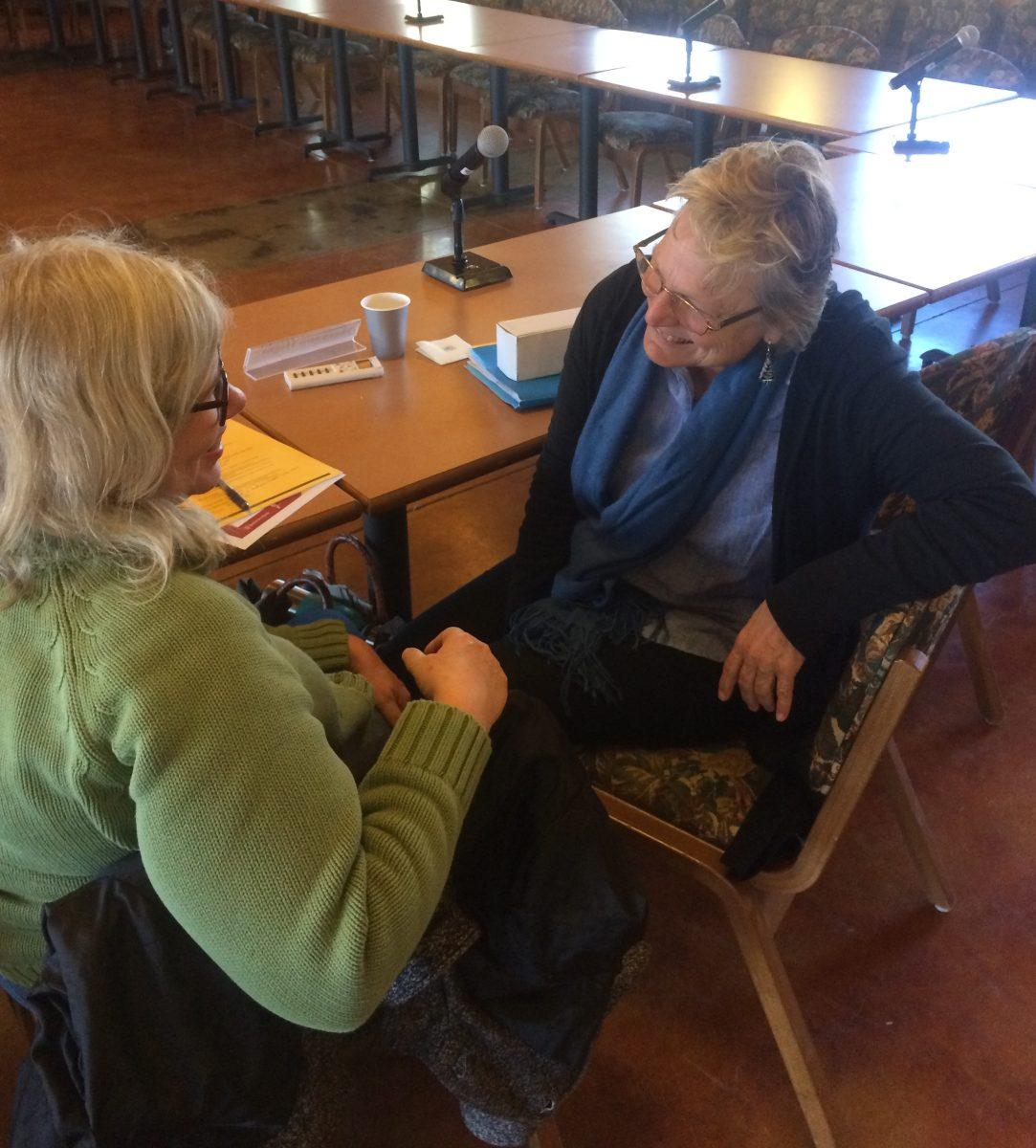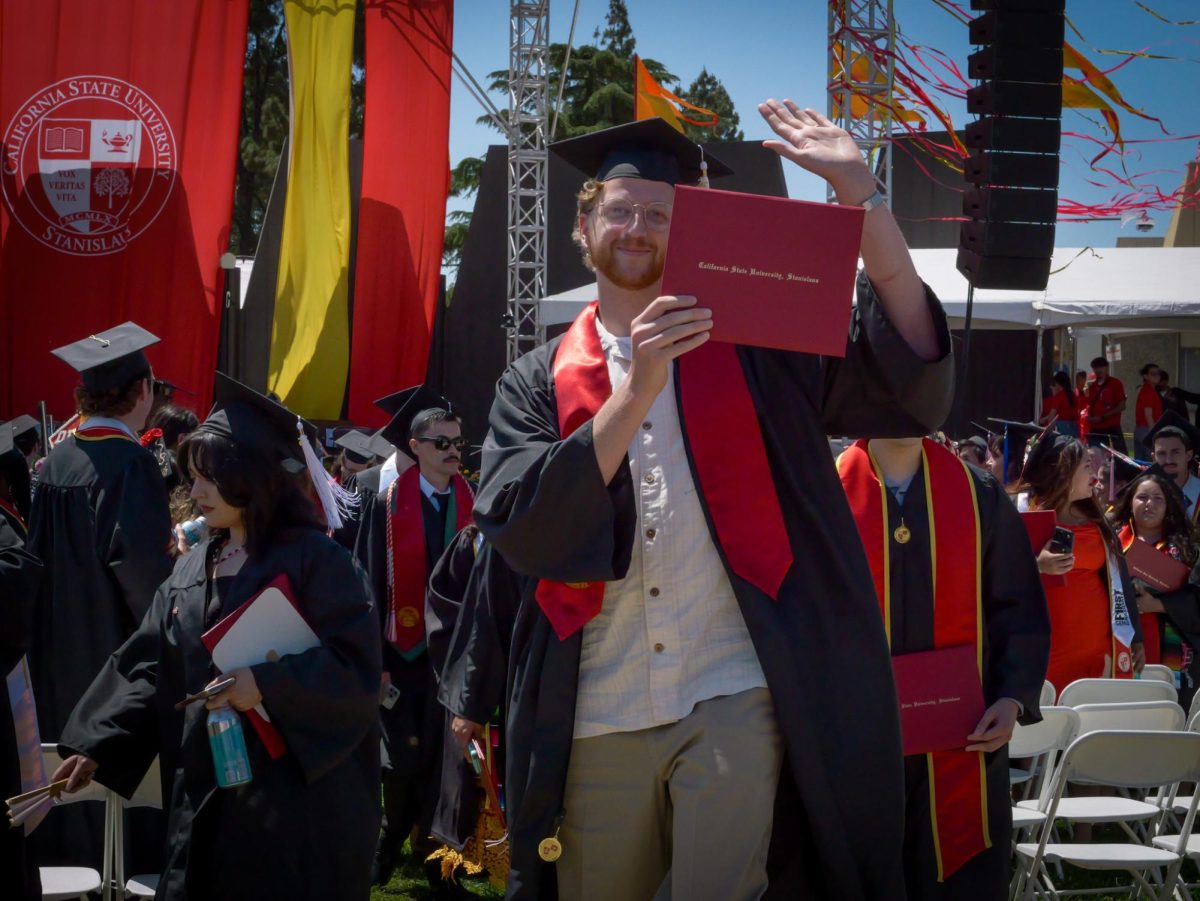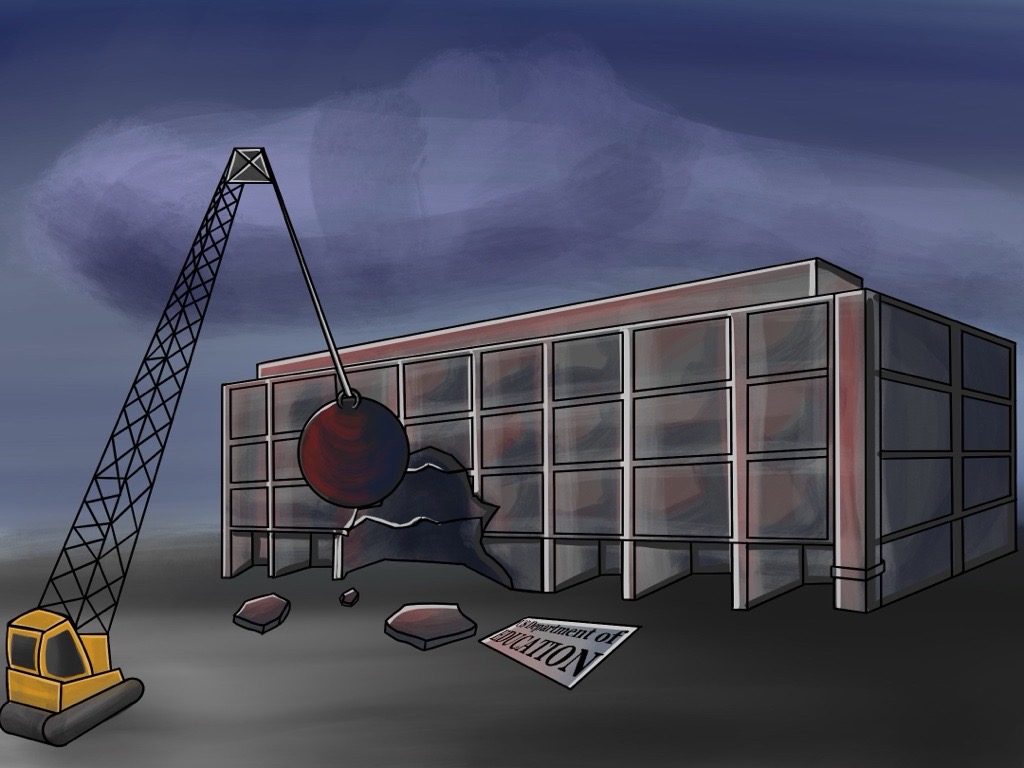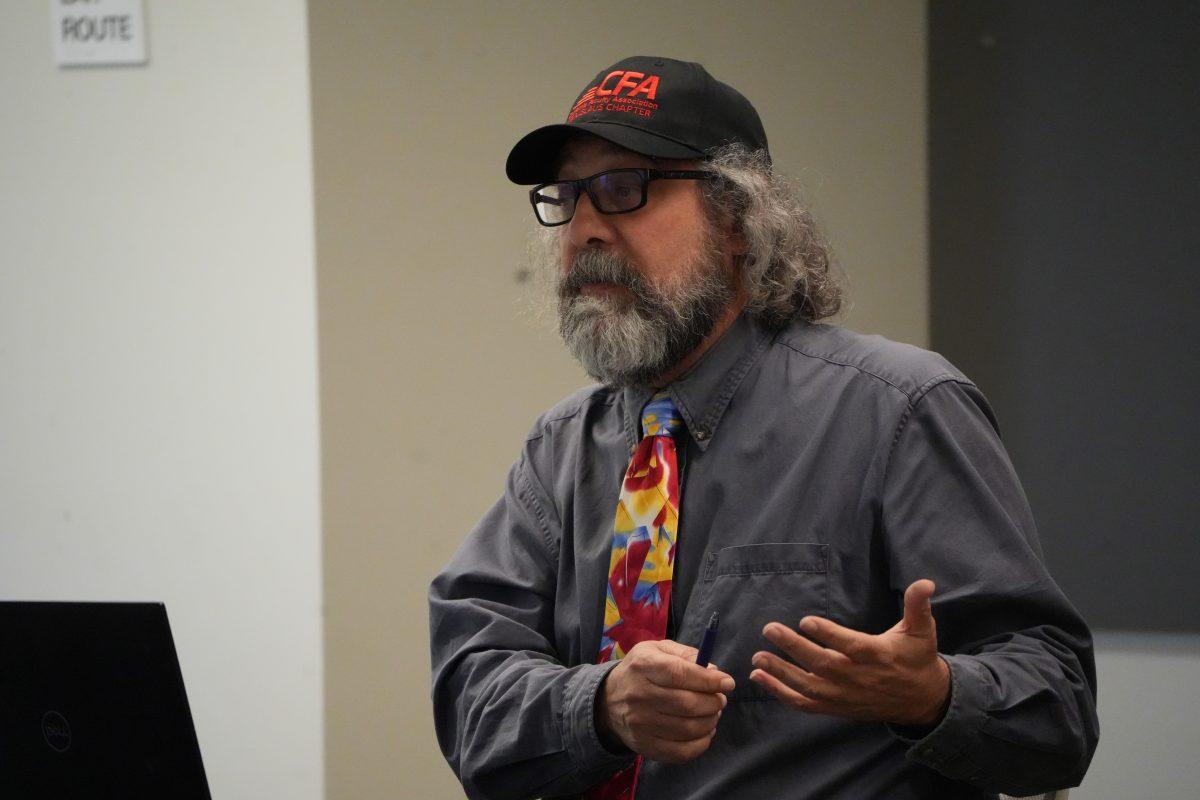Discussions on the implementation of an assessment plan for graduate programs, how “student success” should be defined, and the campus’ commitment to diversity and inclusion were addressed at the Academic Senate last Tuesday.
Graduate program assessments: A help or a hinderance?
A spirited discussion arose in this week’s Senate around the issue of quantitatively measuring learning. Dr. Andrew Dorsey (English) explained that the draft of the new Graduate Assessment Plan presented to the Senate is an update to the 2008/09 version that currently stands.
“The hope is that this updated Graduate Assessment Plan will be a more streamlined, effective plan because it’s going to use already existing mechanisms to assess programs,” said Dr. Dorsey.
Dorsey and Dr. Stuart Wooley (Biology) presented the plan as a sort of lens into graduate studies at Stan State. “It’s not a way to reassess programs, it’s a way to see…what the graduate studies are like at Stan State,” Dr. Wooley said. “How are we doing in graduate work overall based on the reports from each organization?”
Dr. Steven Filling (Accounting and Finance) raised concerns about the practice of graduate program assessment as a whole. He referenced this New York Times article, which argues that assessment of university-level programs tries to push the broad life experiences gained while obtaining a university education into quantifiable, career-related boxes, and disregards the socio-economic factors that may cause students to struggle.
“The projects like this seem to be fundamentally misguided in terms of actually improving education and learning outcomes,” Dr. Filling said.
Dr. Ann Strahm (Sociology) raised similar concerns with the practice of assessment. She explained that she often doesn’t hear positive responses from students in regards to their education until they have graduated and actually begun implementing it in their careers.
“There’s a lot of learning and a lot of education that you cannot quantify and you cannot see results of immediately…we’re not necessarily ever going to get to see the fruits of our labor,” said Dr. Strahm. She raised frustration with quantitative measures being used to evaluate the quality of graduate education. She indicated that professors should instead be encouraged to be “innovative” in the ways that they facilitate learning in the classroom.
Dr. Dorsey argued that the new plan simply complements the broad spectrum of teaching and learning styles that are already in place. “The way I think about assessment is, we’re all doing it,” he said. He indicated that each department does and should assess its students in different ways, and that the new Graduate Assessment Plan takes these differences into consideration. “You can report however you need to report,” said Dr. Dorsey.
Dr. Shawna Young, Associate Vice President for Academic Affairs, reinforced the idea that assessment can be implemented in the ways that departments see fit. “It has the potential for being very thematic in nature…very qualitative in nature,” she said.
Dr. Young presented the plan as a way to pinpoint areas in which students need help. She suggested that if, as an example, graduate students were struggling with writing, Stan State would be able to recognize that theme through graduate assessments and “put some resources toward increasing support for writing at the graduate level.”
The Graduate Assessment Plan will be further discussed at future Academic Senate meetings. Dr. Cathlin Davis, the Academic Senate’s Speaker of the Faculty, encouraged faculty to bring the discussion around assessment back to their individual departments.
Defining Student Success at Stan State
Tuesday’s other discussion topic was that of Stan State’s definition of “student success.” Various committees collaborated to create a draft of this definition.
Dr. Davis explained that, when the Strategic Plan (which guides campus-wide decision making) was being written, “They realized…that there was no clear definition of what student success meant.”
“This really emerged through the self-study process…it became apparent to the work group..that they didn’t see a common definition for student success,” said Dr. Young.
Discussion of the definition at Tuesday’s meeting mostly covered verbiage and wording in the draft.
Dr. Al Petrosky (Management Operations and Marketing) indicated that his students often find that material learned in their classes “has changed the way they look at their chosen profession…I would suggest putting something to the effect of ‘inform the practice of their chosen profession.’”
Dr. Filling expressed concern with the draft’s usage of the phrase, “the best version of themselves” in reference to students and suggested more objective phrasing.
Dr. Mark Thompson (English) argued that the draft doesn’t actually define student success—only when it is achieved or realized.
The draft definition of student success will continue to be discussed at future Academic Senate meetings.
Open Forum: Diversity, inclusion and encouragement
In the meeting’s open forum, Dr. Betsy Eudey (Gender Studies) addressed faculty attendees in regards to their responsibility to encourage and assist students who are on academic probation. “A lot of times students are on probation because they are lacking the ability to come and talk to faculty,” she said.
Dr. Eudey explained that many of the students who are on academic probation are facing personal crises or are struggling in other areas of their lives. “If you have students who aren’t showing up regularly…please remind them of the resources available on campus. Please welcome them into your offices. Do anything you can…we have students on probation who don’t need to be on probation,” she said.
President Ellen Junn spoke of her plans to reinforce Stan State’s commitment to diversity and inclusion. She said that she plans to create banners “placed around campus with quotes from students…what does it mean that our campus supports diversity and inclusion?”
President Junn added that Mayor Gary Soiseth expressed interest in the banners being placed around Turlock. “I think we’re pretty unusual. I don’t know of any other CSU campus that is partnering with the city in order to address some of those issues,” said President Junn.
President Junn said the banners should be installed around campus this March.
For more information about Academic Senate, click here. The next Academic Senate meeting will be held on March 13 at 2 p.m. in the Faculty Development Center (FDC), room 118.







